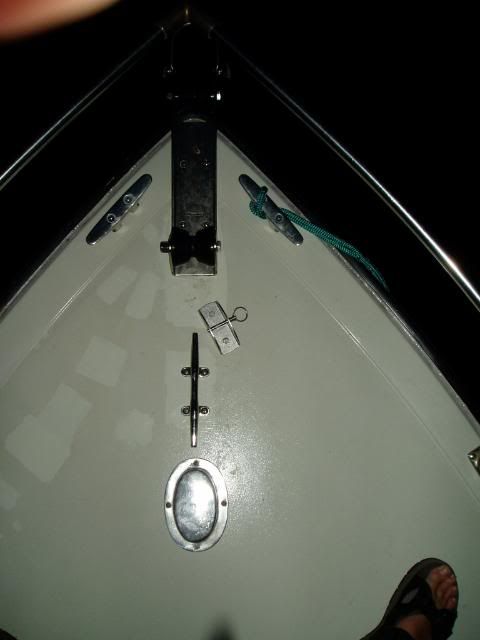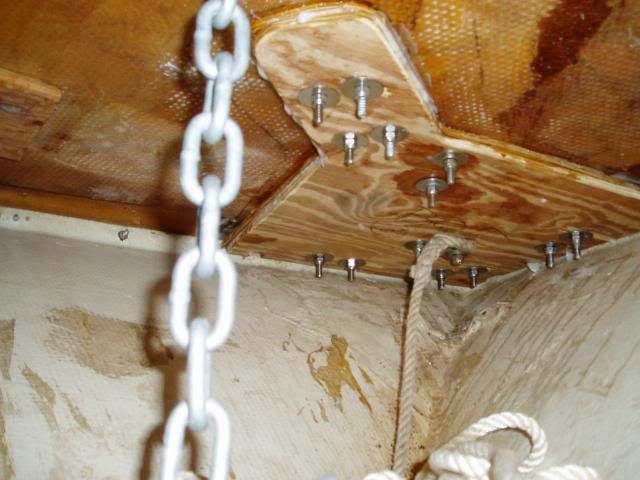Quote:
Can you post or send some pics from directly overhead and underneath so I can view your bolting pattern and backing board design?
|
Top View

Bottom View

If you're gonna do this, first pull out the plywood bulkhead between anchor locker and cabin for better access, as it's a long reach up to those cleats and bow light! I used some HD aluminum foil to make a "mold" of raised underside of toe rail area to determine thickness needed for cleat backer boards that would make them flush with rest of deck. 1/2" plywood was perfect. The deck has a fair amount of crown in it, so needed a couple of thinner 5/16" pieces that would conform to it. They're basically 15" squares with an extension on aft end to cover the center cleat area. All holes in cored deck were drilled oversize, filled with thickened epoxy and then re-drilled to required size. Wood got one coat of epoxy, then a layer of thickened epoxy on top to bond it to deck or previous layer. Used bolts sprayed with WD-40 in the holes to hold wood pieces to underside of deck till epoxy cured. Also used wedges and a bottle jack to force 15" squares to conform to crowned deck. The wood pieces were installed in 3 separate steps over 3 days to let epoxy cure and redrill holes before installing next layer. Used fender washers under all nylock nuts. The whole deck is real solid now, although it had no soft spots before! Should easily hold a windlass if it's ever needed.
Gillie, if you ever tow some one, just use the towing eyes in the transom, not the deck cleats. I have 20' lines hanging on each stern cleat with snap hook on one end snapped to towing eye, with an eye spliced in other end. Then just uncoil the two lines to make a bridle that the towee can hook to. If you're being towed, for our Bahama trips, we used to run the anchor line down thru a carribiner hook or shackle on the bow eye and then back up to the deck with a snap hook on end of it; if you need a tow, just hook to bridle on companion boat. If you're towing offshore and the seas get big, you want a looong tow line so it has some stretch to it to accomodate the shock that will occur when the boats get out of phase with the waves, ie., when tower is going down face of a wave while towee is trying to climb up backside of a wave. With that set-up you can rig to tow or be towed very quickly. This can be a significant safety factor because Murphy says that when you do break down, it'll be in the middle of a thunderstorm with rain coming in sideways and blowing like hell!